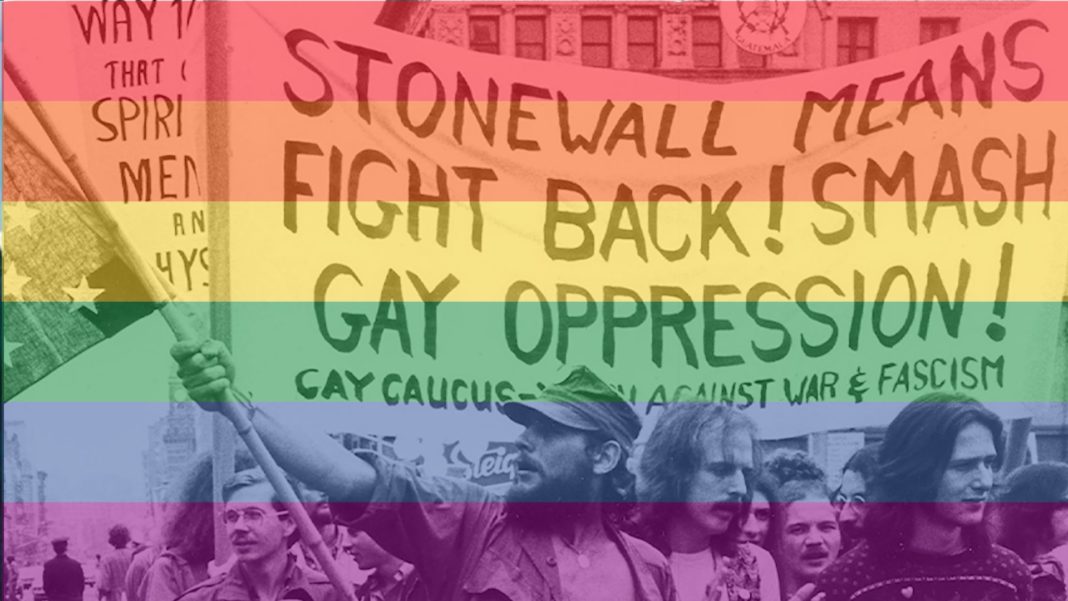
51 years ago today, police officers and patrons of the Stonewall Inn–a well-known gathering place for New York City’s queer community–clashed and memorable, momentous fashion. Like most gay clubs at the time, the Stonewall Inn did not have a liquor license. And also like most gay bars, it was owned by members of organized crime families who used bribery to keep the police at bay and raids down to a minimum. But on June 28, 1969, tensions came to a head. Police raided the bar and began to arrest anyone who looked “visibly gay,” and after many overtly abusive actions, the two sides came to blows.
Objects were hurled, punches were thrown and the fight escalated, as crowds of angry men faced off against the New York Tactical Police Force, which was called in to control the crowd. The riots raged into the next day and started again the following night along Christopher Street. The fighting continued sporadically during the next few days, spurring activists across the country to organize for LGBTQ rights. The Stonewall Uprising is widely considered to be the birthday of the modern gay liberation movement.
In the decades since, countless people have dedicated their lives to protecting the rights of the LGBTQ community, but LGBTQ trailblazers are found in even the earliest days of American history. As we end the celebrations of Pride month, let’s look back at some of the folks you may not have heard of who made an impact on the history of LGBTQ rights in America.
American LGBTQ Trailblazers
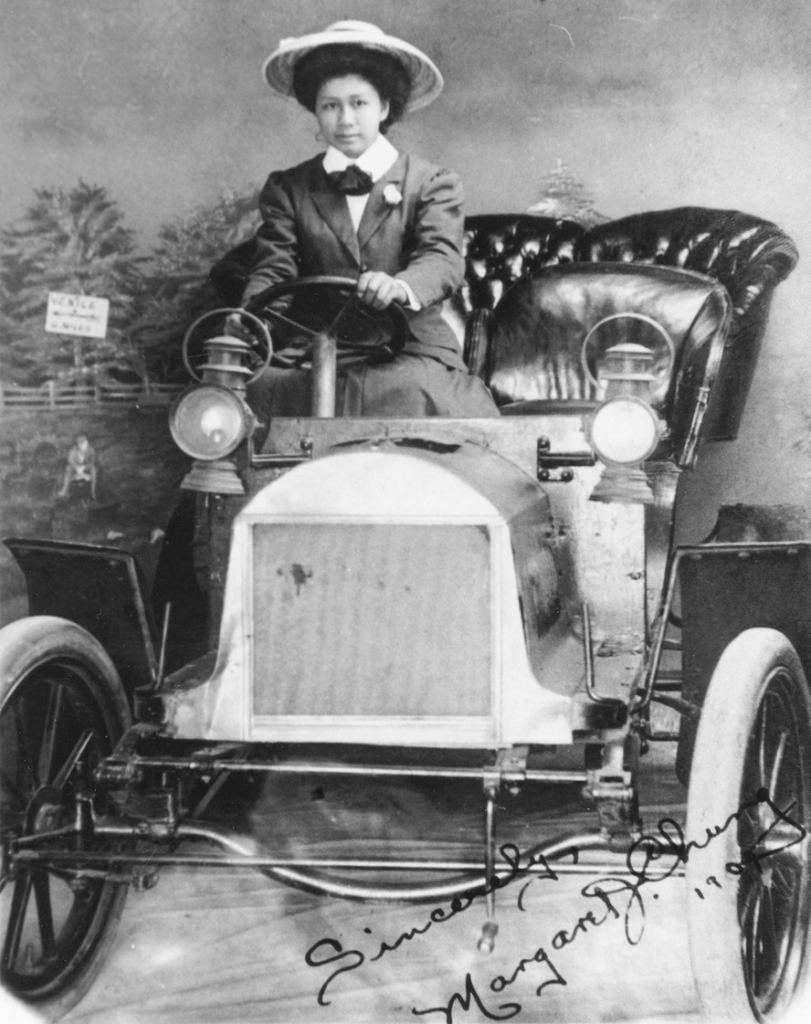
Margaret Chung (1889 – 1959)
Breaking gender and racial boundaries, Margaret Chung was the first known female Chinese doctor in the United States. She graduated from the University of Southern California’s (USC) medical school in 1916. Chung, who was also known as “Mike” in some circles, reportedly never married and wore masculine clothes. She also had romantic relationships with women such as Sophie Tucker and Elsa Gridlow. (Courtesy LAPL.)
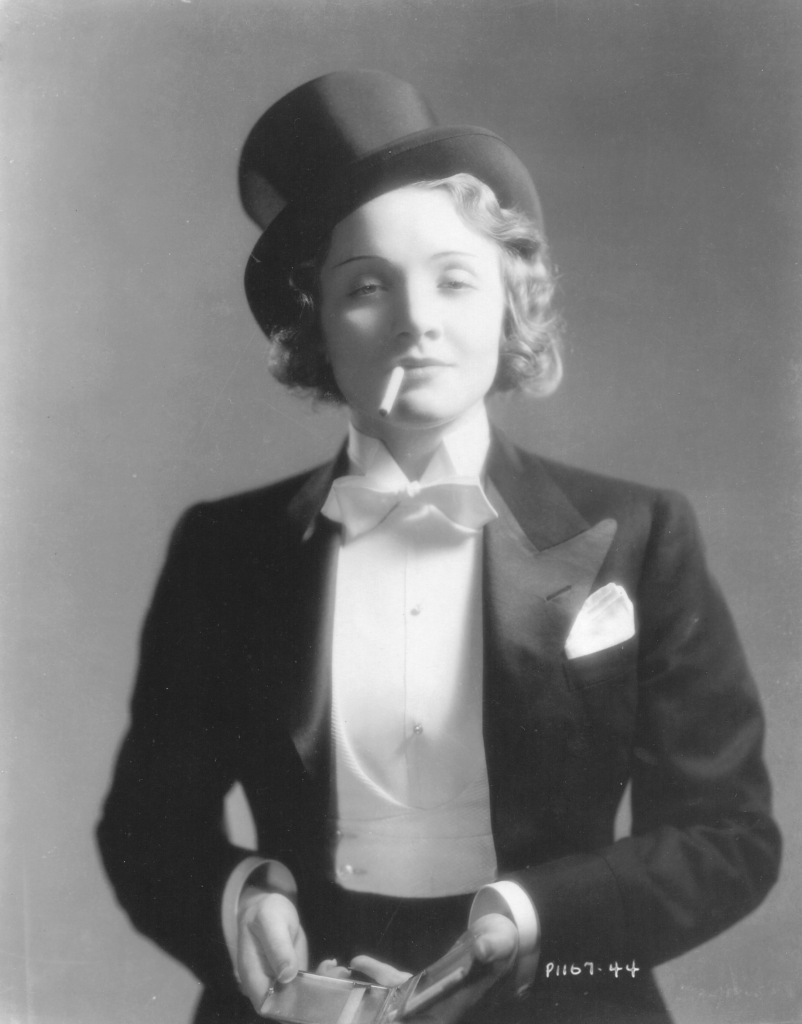
Marlene Dietrich (1901-1992)
No celebrity redefined female sexuality in the 1920s and 1930s more than Marlene Dietrich. She projected an androgynous appearance, often wearing masculine clothing. Promotions for her film Morocco featured Dietrich in a tuxedo. For the film Blonde Venus, posters showed her in white pants and blue blazer. These advertisements appeared during a time when a woman wearing pants was considered sexual radicalism. While studio bosses hid male homosexuality, when it came to Dietrich, they promoted her androgynous style as part of the hype around her films. Offscreen, Dietrich kept no secrets about her love affairs with women. (Courtesy ONE.)
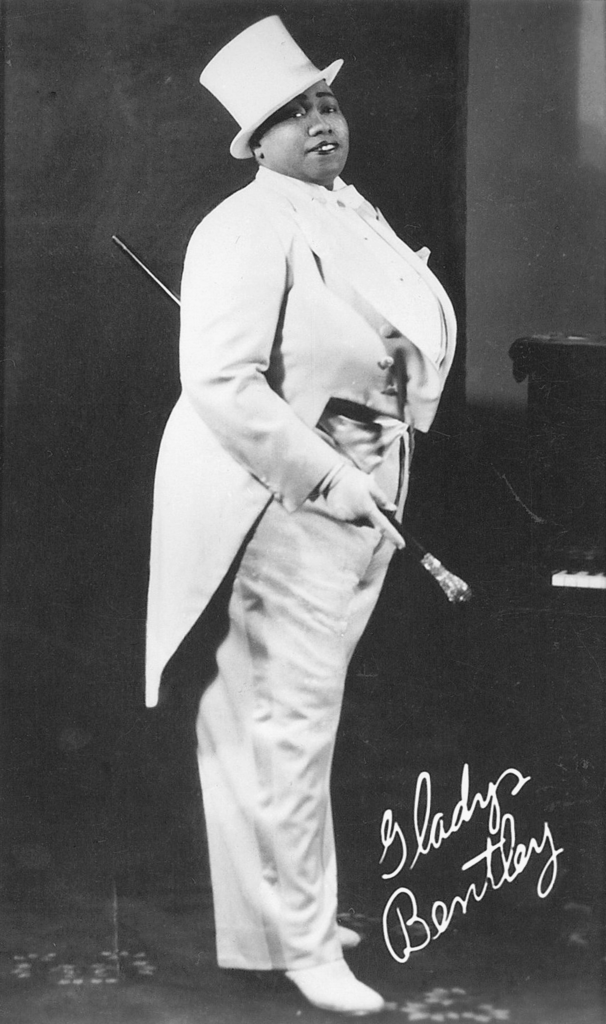
Gladys Bentley (1907-1960)
Having found success in New York speakeasies in the 1920s, Gladys Bentley moved to Los Angeles in 1937 after the repeal of Prohibition saw a decline in speakeasy nightlife. In Los Angeles, Bentley revived her career as gay bars proliferated during World War II. Her blues and jazz acts featured her dressed in a man’s tuxedo. An open lesbian, Bentley later denied her homosexuality as the national mood increasingly became homophobic during the McCarthy era.
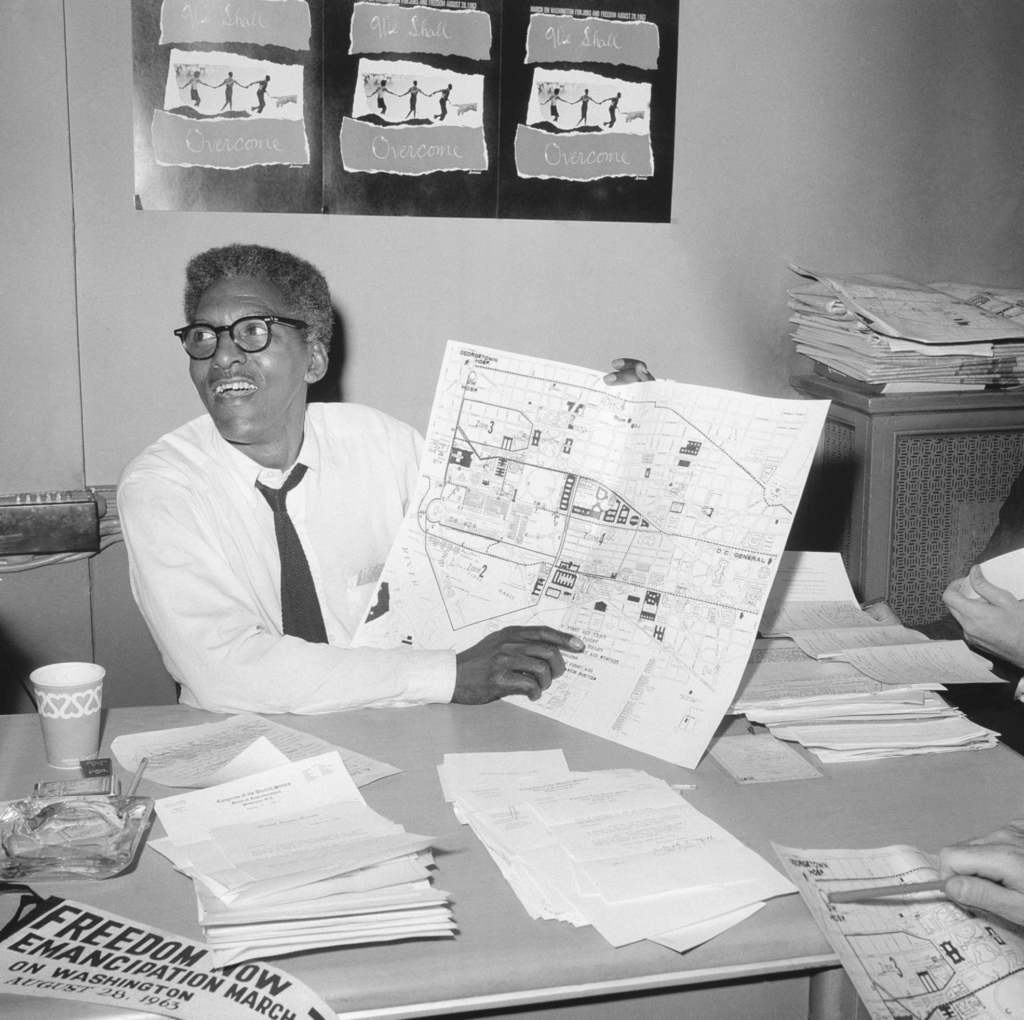
Bayard Rustin (1912 -1987)
A co-founder of the Southern Christian Leadership Conference and co-organizer of the 1941 March of Washington, Rustin was an activist in the early movements for gay rights. Due to the homophobia directed at him, he usually had to organize behind the scenes, uplifting civil-rights leaders who were not openly gay. In the 1980s, he was able to become a more public advocate on behalf of gay causes. In November 2013, President Barack Obama posthumously awarded Rustin the Presidential Medal of Freedom, which Rustin’s partner, Walter Naegle, accepted on his behalf.
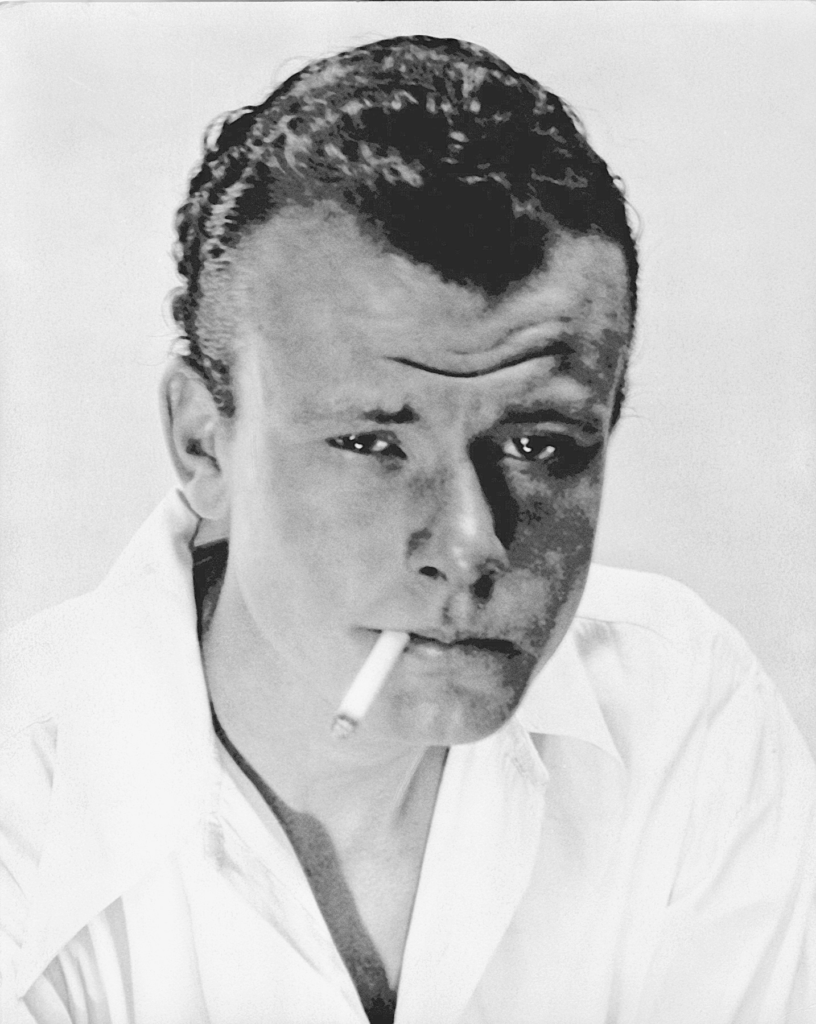
Harry Hay (1912-2002)
When Harry Hay convened the first meeting of the Mattachine Society in 1950, it marked the start of the modern LGBT movement. Hay conceived of gay people in an entirely new way. He and the Mattachine Society argued that homosexuals were an oppressed cultural minority. Born into nuclear families and exposed only to heterosexual organizational structures with masculine men serving as fathers and feminine women serving as mothers, homosexuals who did not fit this mold were lost in a foreign culture with no role models or alternative family structures. Mattachine advocated “consciousness building” among gay people to help them discover their natural identities and build connections among other homosexuals. This platform was extremely radical for its time and was quickly challenged by many homosexuals who believed they were no different from heterosexuals, except for their sexual activities. Still, it was this platform that became the basis for nearly all future LGBT identity formation and cultural development. Mattachine also laid the groundwork for future LGBT organizing.
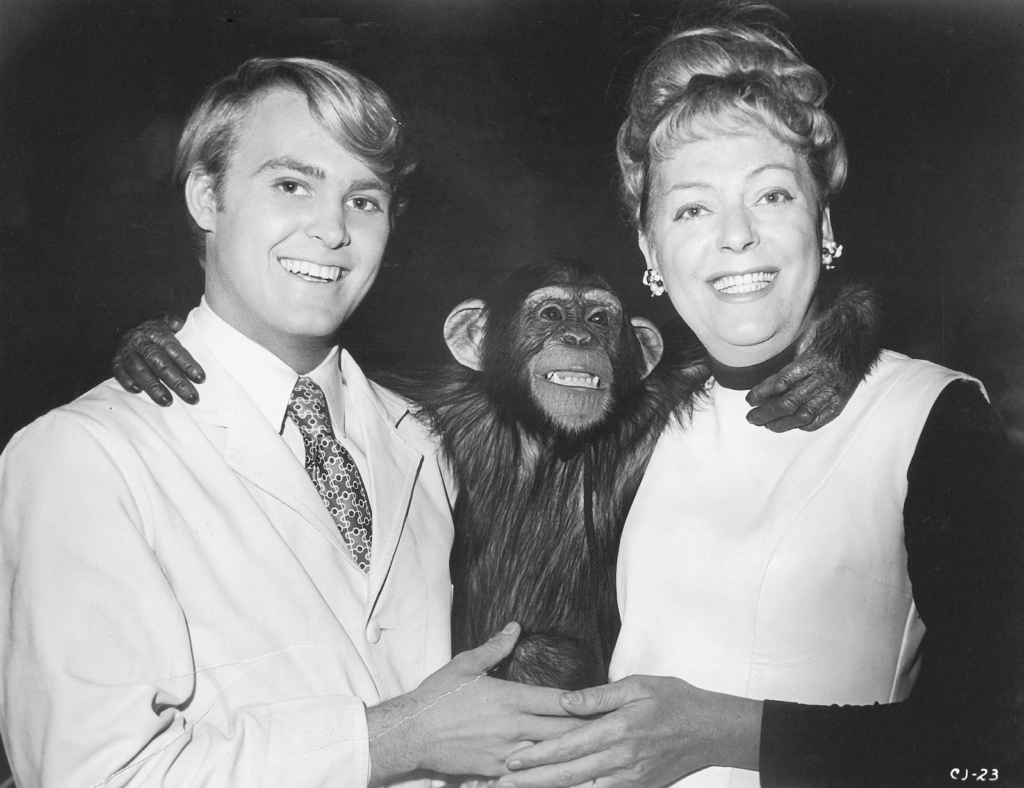
Christine Jorgensen (1926 – 1989)
Christine Jorgensen (right) was an American transgender woman who was the first person to become widely known in the United States for having sex reassignment surgery. Jorgensen grew up in the Bronx, New York City.
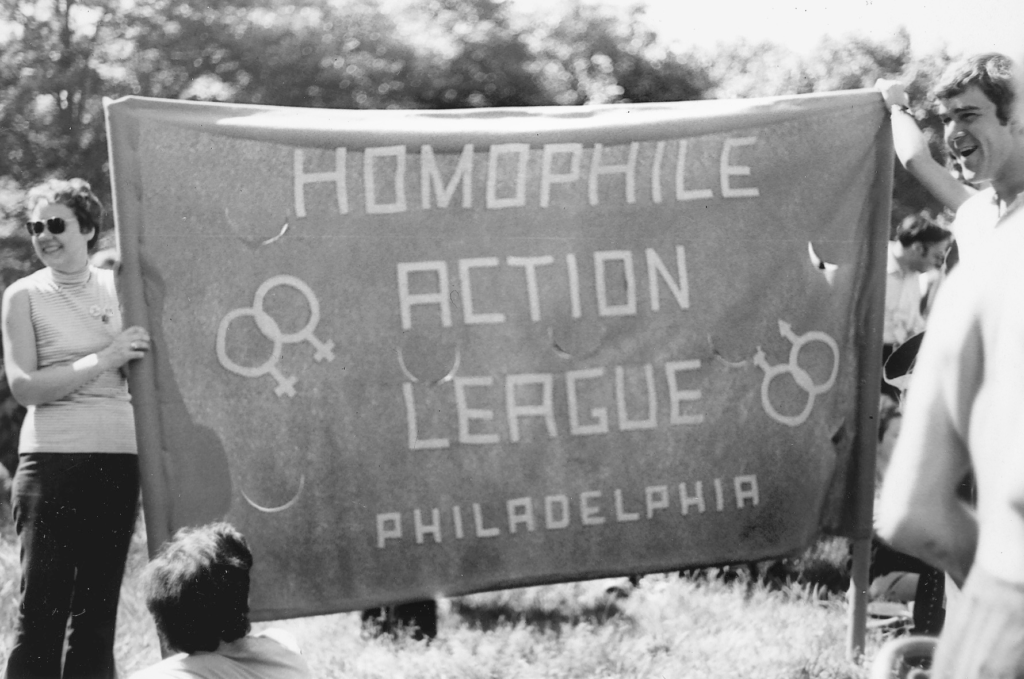
Barbara Gittings (1932-2007)
Barbara Gittings (left) stands alongside the Homophile Acton League (HAL) banner c. 1970. The Daughters of Bilitis (DOB), a lesbian organization founded in California in the 1950s, attracted lesbian newcomers after Philadelphia police raided Rusty’s.
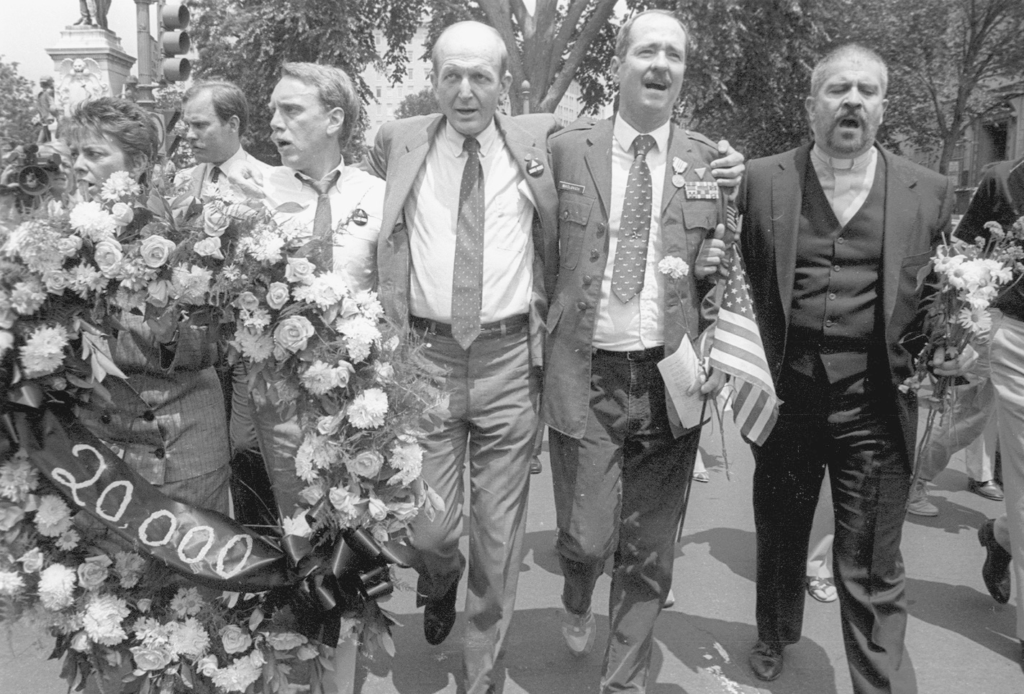
Lenoard Matlovich (1943 – 1988)
Technical Sergeant Leonard Philip Matlovich (far right) was an American Vietnam War veteran, race relations instructor, and recipient of the Purple Heart and the Bronze Star. He was the first gay service member to purposely out himself to the military to fight their ban on gays, and perhaps the best-known openly gay man in America in the 1970s next to Harvey Milk.
Marsha P. Johnson
Marsha P. Johnson (August 24, 1945 – July 6, 1992) was an American gay liberation activist and self-identified drag queen. Known as an outspoken advocate for gay rights, Johnson was one of the prominent figures in the Stonewall uprising of 1969. A founding member of the Gay Liberation Front, Johnson co-founded the radical activist group Street Transvestite Action Revolutionaries (S.T.A.R.), alongside close friend Sylvia Rivera.A popular figure in New York City’s gay and art scene, Johnson modeled for Andy Warhol, and performed onstage with the drag performance troupe Hot Peaches.[6] Known for decades as a welcoming presence in the streets of Greenwich Village, Johnson was known as the “mayor of Christopher Street.” From 1987 through 1992, Johnson was an AIDS activist with ACT UP.
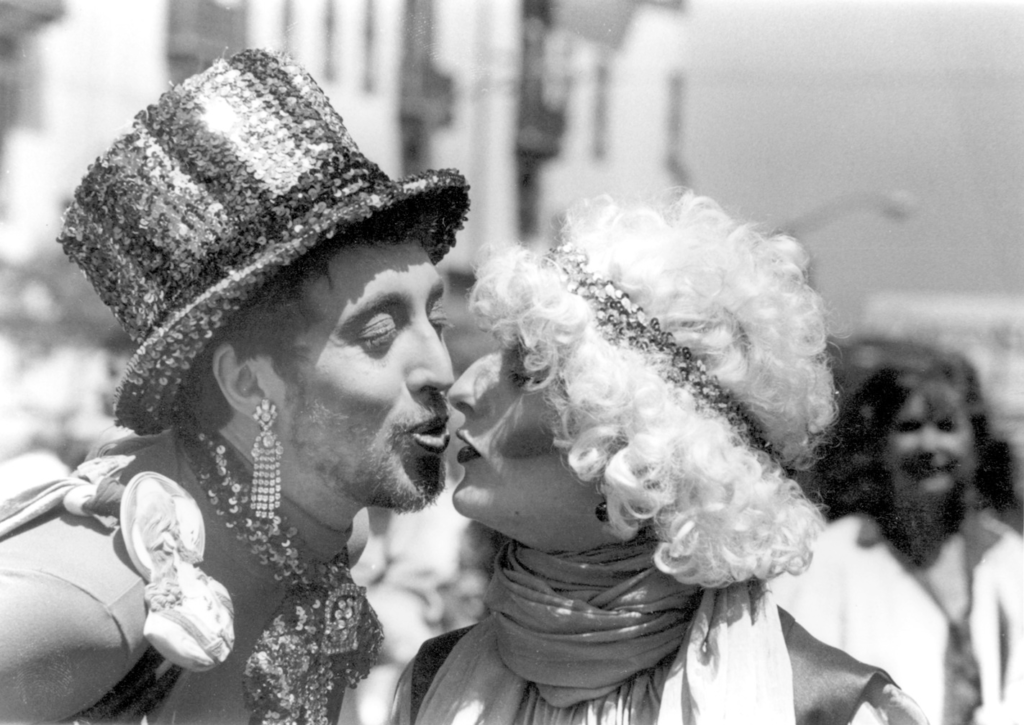
Gilbert Baker (1951-2007)
At the 1980 Castro Street Fair we find Gilbert Baker, who created the Rainbow Flag for the 1978 Gay Pride Parade, kissing someone who looks a lot like actor Richard Chamberlain. What do you think? (Photo Robert Pruzan, courtesy GLBT Historical Society.)
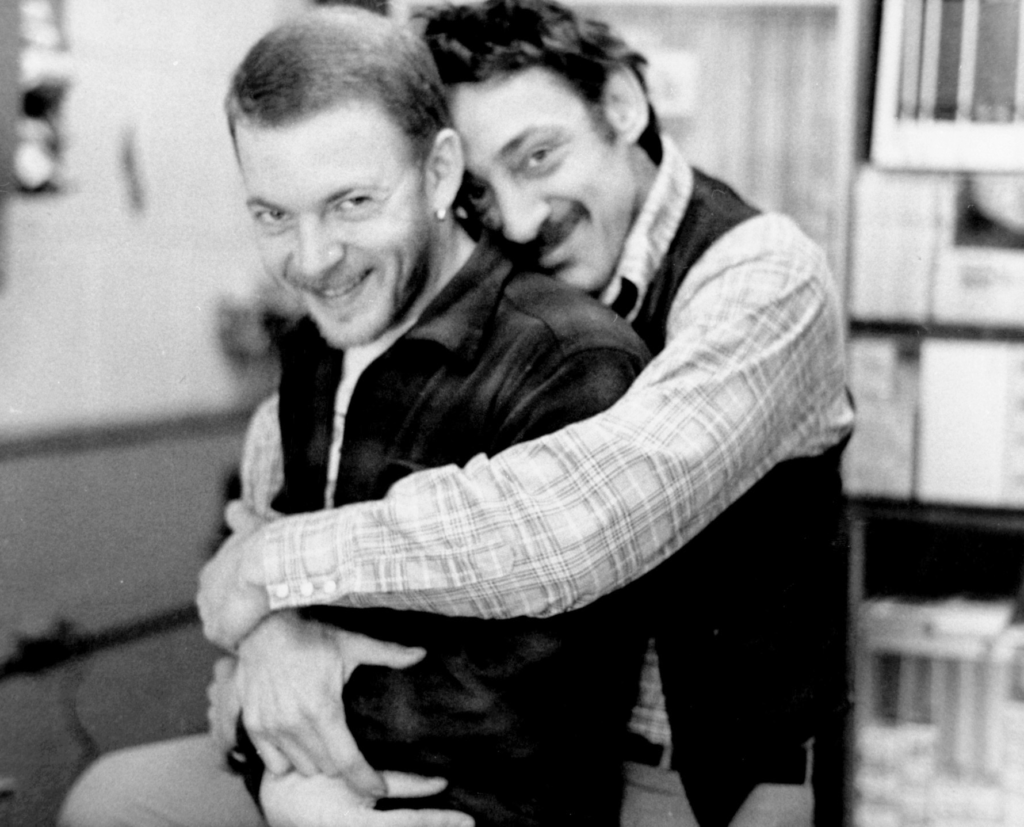
Harvey Milk (1930-1978)
Harvey Milk (right) was an American politician and the first openly gay elected official in the history of California. Here, Milk is shown with his partner, Scott Smith.
Before moving to California in 1973 and opening Castro Camera in the famous Castro neighborhood, Milk was a conservative Republican on Wall Street, a closeted gay man living with a series of male lovers. After opening the shop, the exceedingly gregarious Harvey introduced himself to all the other merchants and offered help to whoever needed it, soon earning the nickname the “Mayor of Castro Street.”
Upset by his own problems with the city government, Harvey decided to run for the board of supervisors in 1973. He lost, but found that he loved campaigning. (Photo Harvey Milk Archives, Scott Smith Collection, San Francisco Public Library.)
Explore More LGBTQ History >

